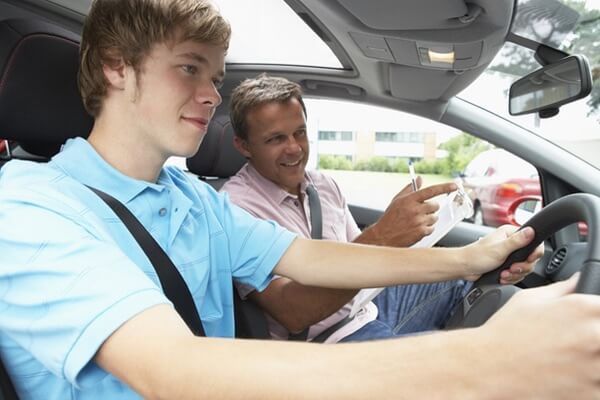You've been studying, and now it’s time to put what you’ve learnt into practice behind the wheel. Booking your first driving lesson is exciting, but it may not take too long for the nerves to creep in. Let’s have a look at a few things you can do to help keep you calm, cool and collected as you learn how to drive.

How to prepare for your first driving lesson
Review the Highway Code - not only will it help you when it comes to taking your theory test, it'll keep the rules and regulations of the road fresh in your mind.
Pick out a practical outfit. Try to wear something comfortable that you can move around in and avoid any restrictive clothing and footwear. High heels and flip flops, in particular, aren’t ideal when driving.
Remember your provisional licence - your instructor will check that you have it. You can't legally be behind the wheel without one so it's an absolute must for your first driving lesson. You might also be asked for your check code, so your instructor can check your online licence counterpart.
Make sure you're physically fit to drive. Avoid drinking the night before and remember to bring your glasses or contact lenses if you need them.
What do you do on your first driving lesson?
Will I drive straight away?
Don’t worry - you won’t get in the driving seat straight away. First, your instructor will drive you to a quiet road where you’ll learn all the fundamentals of the car controls. This includes the gears, the pedals, and what’s known as the cockpit drill.
What’s a cockpit drill?
This is an exercise that all drivers should carry out when they get in the car, and it’s usually one of the first things you're taught. The cockpit drill (often known as the DSSSM routine) consists of checking your doors, seat, steering, seatbelt and mirrors:
- Doors – check all doors are closed and secured before starting your engine.
- Seat and steering – adjust your seating so that the controls are within easy reach and you have a clear view of the road. You should also adjust your headrest to prevent whiplash if you’re in an accident.
- Seatbelt – make sure you and your passengers are buckled in.
- Mirrors – position your mirrors to minimise your blind spots.
How do I move off?
When it comes to the big moment – taking control of the car – you'll have to move the car off and show that you can safely do the 'Prepare, Observe, Move' routine:
Prepare - getting the vehicle ready to pull away when the road is clear
- Press and hold the clutch down with your left foot.
- Select first gear.
- Press the gas pedal down with your right foot until you're at about 1500-2000 rpm.
- Bring the clutch up slowly until you find the biting point.
- Be ready to release the handbrake at the correct time.
Observe – showing your instructor that you're aware of your surroundings
- Check all around the car looking for anything that might affect your driving plan.
- Look over both shoulders.
Move – confidently moving the car off when you're safe to go
- Release the handbrake.
- Release the clutch slowly while gently putting your foot down on the gas pedal.
- If you find you start to move off too fast, ease up on the gas and control the speed of the vehicle using the clutch pedal.
- Re-check your mirrors and blind spots and move your car to the normal driving position.
What if I make a mistake?
It’s normal to be nervous when you're learning to drive - and you’re not expected to master everything straight away. Driving is something you get better at with time and practice. Even drivers who’ve been on the road for years are still improving. So don't worry about making a mistake - your instructor's seen it all before.
In the (unlikely) case of something going wrong, rest assured that your instructor can control the car. All professional driving schools use dual controlled cars, which means your instructor can step in if you need some help.
